
How to Use ME2-CO Module: Examples, Pinouts, and Specs
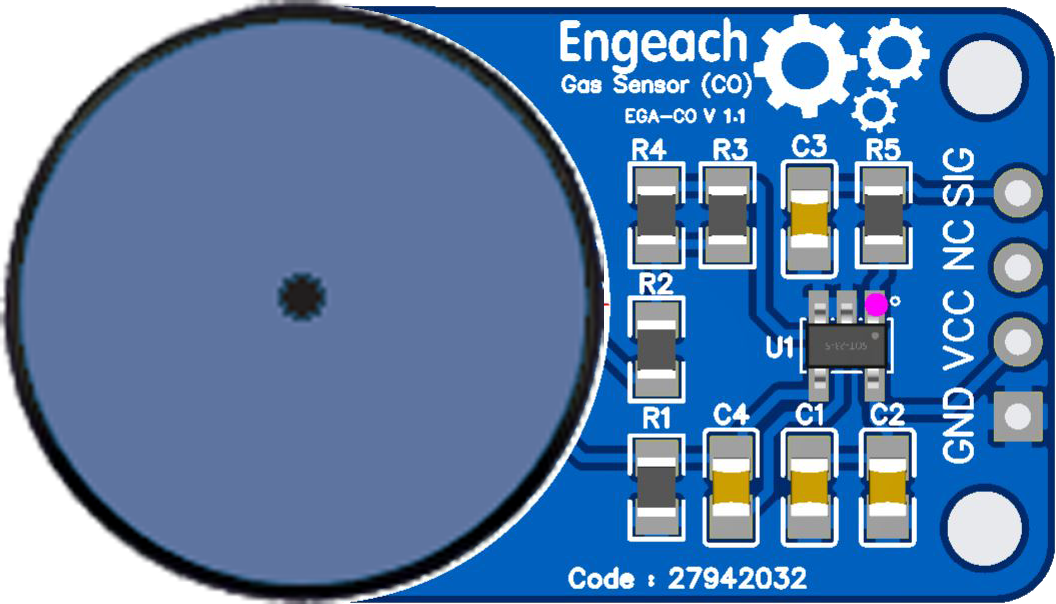
 Design with ME2-CO Module in Cirkit Designer
Design with ME2-CO Module in Cirkit DesignerIntroduction
The ME2-CO Module, manufactured by Engeach, is a gas sensor module designed to detect carbon monoxide (CO) levels in the air. This module is widely used in safety and environmental monitoring applications, such as in residential and commercial CO detectors, industrial safety systems, and air quality monitoring devices. The ME2-CO Module provides reliable and accurate CO detection, making it an essential component for ensuring safety in various environments.
Explore Projects Built with ME2-CO Module
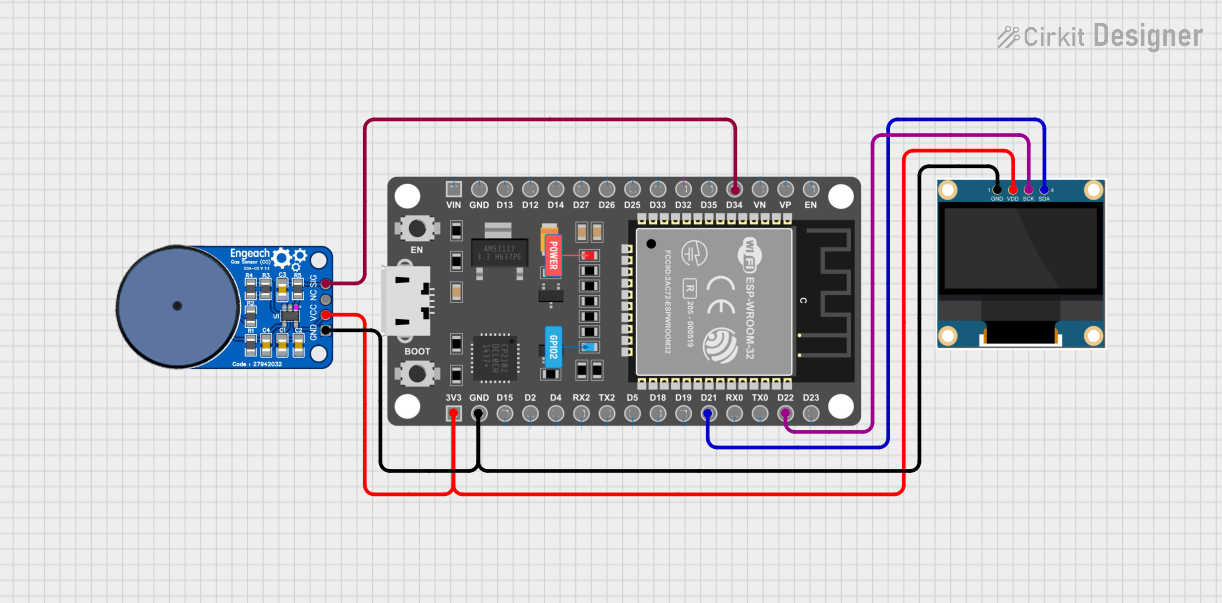
 Open Project in Cirkit Designer
Open Project in Cirkit Designer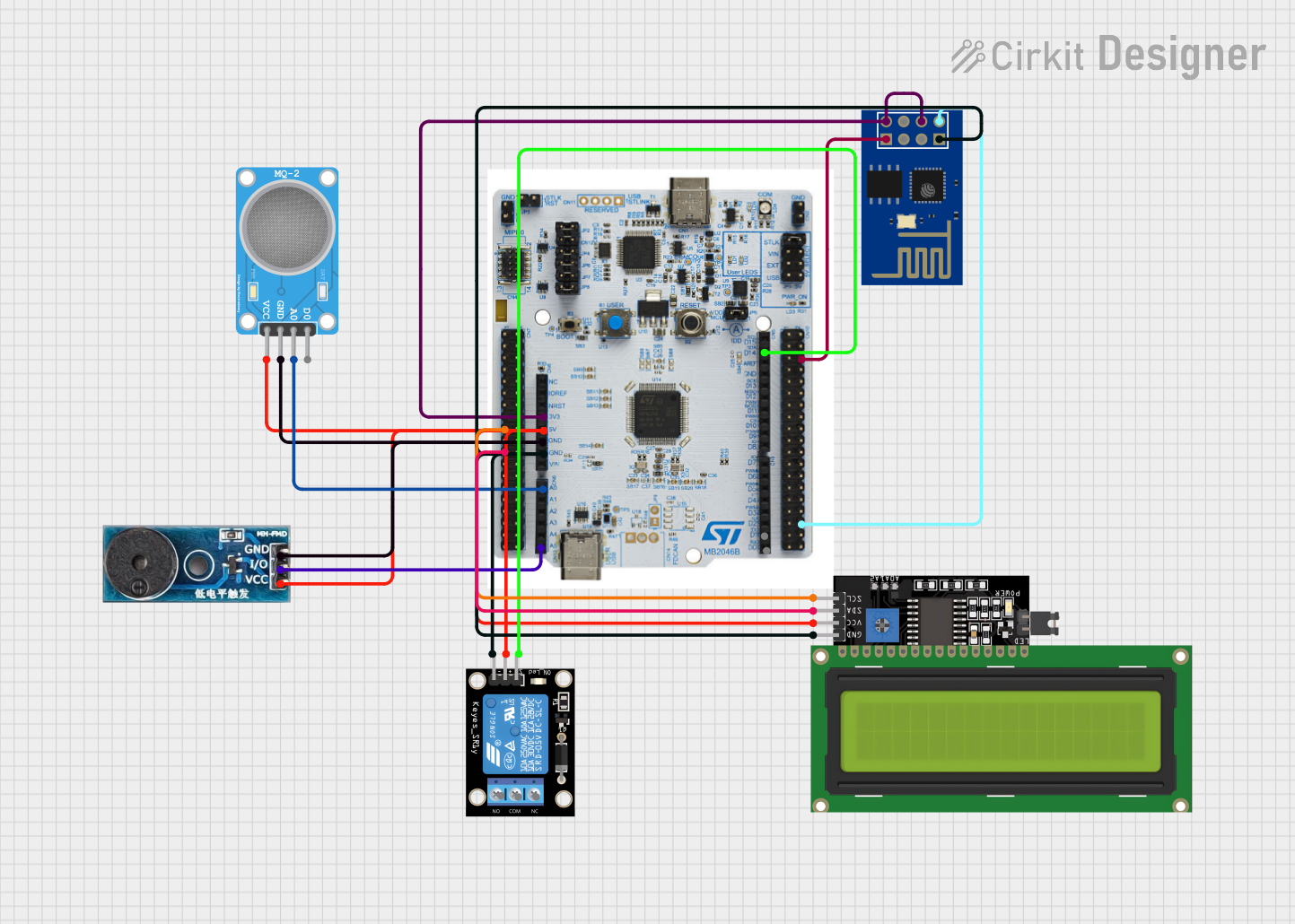
 Open Project in Cirkit Designer
Open Project in Cirkit Designer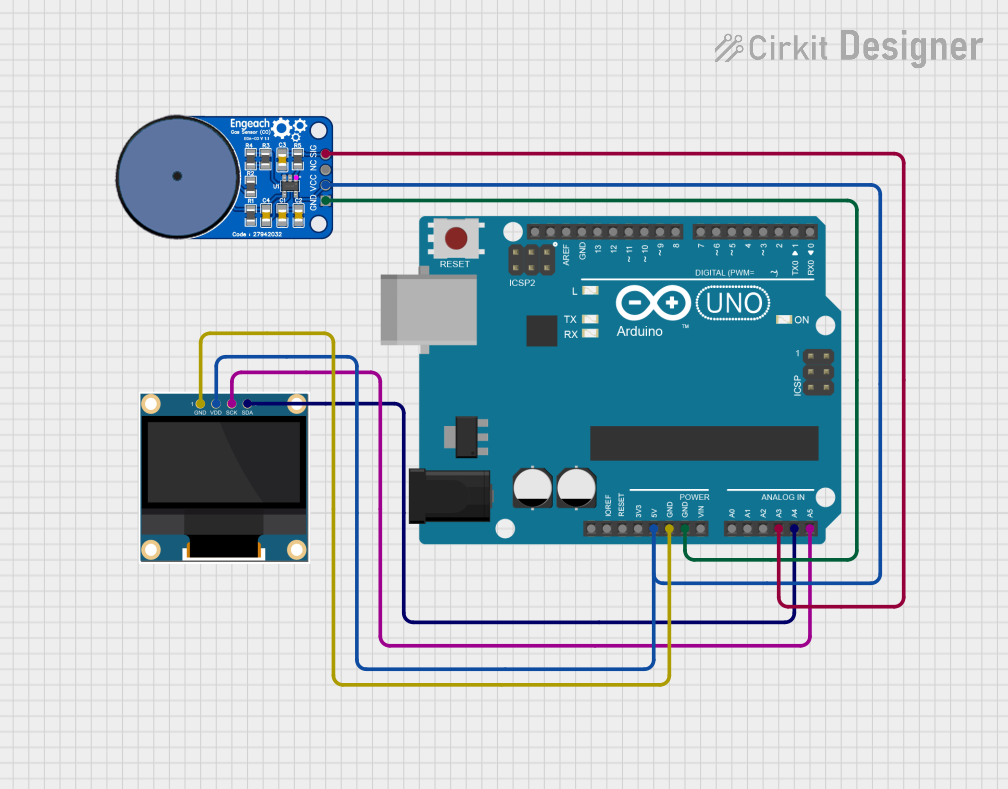
 Open Project in Cirkit Designer
Open Project in Cirkit Designer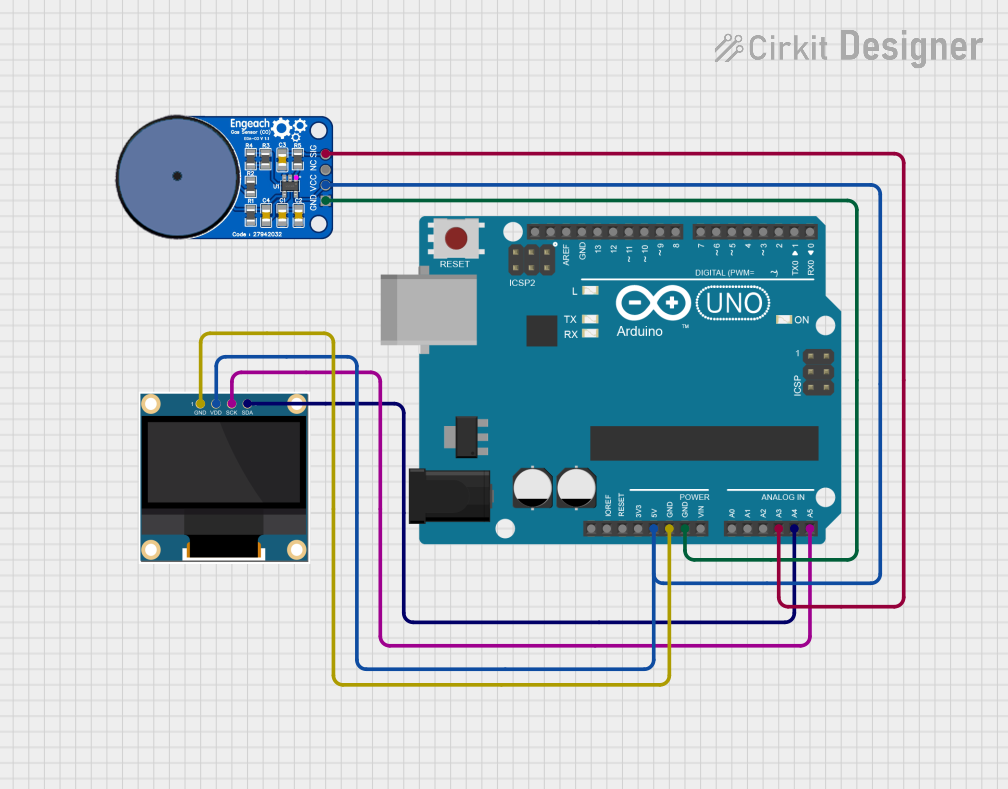
 Open Project in Cirkit Designer
Open Project in Cirkit DesignerExplore Projects Built with ME2-CO Module

 Open Project in Cirkit Designer
Open Project in Cirkit Designer
 Open Project in Cirkit Designer
Open Project in Cirkit Designer
 Open Project in Cirkit Designer
Open Project in Cirkit Designer
 Open Project in Cirkit Designer
Open Project in Cirkit DesignerTechnical Specifications
Key Technical Details
| Parameter | Value |
|---|---|
| Operating Voltage | 5V DC |
| Operating Current | < 10mA |
| Detection Range | 0-1000 ppm |
| Sensitivity | 0.1-10 ppm |
| Response Time | < 30 seconds |
| Recovery Time | < 60 seconds |
| Operating Temperature | -20°C to 50°C |
| Humidity Range | 0-95% RH (non-condensing) |
| Output Type | Analog Voltage |
Pin Configuration and Descriptions
| Pin Number | Pin Name | Description |
|---|---|---|
| 1 | VCC | Power supply (5V DC) |
| 2 | GND | Ground |
| 3 | AOUT | Analog output signal |
| 4 | DOUT | Digital output signal (threshold) |
Usage Instructions
How to Use the Component in a Circuit
- Power Supply: Connect the VCC pin to a 5V DC power supply and the GND pin to the ground of your circuit.
- Analog Output: Connect the AOUT pin to an analog input pin on your microcontroller (e.g., Arduino UNO) to read the CO concentration as an analog voltage.
- Digital Output: Connect the DOUT pin to a digital input pin on your microcontroller to receive a high/low signal based on a preset CO concentration threshold.
Important Considerations and Best Practices
- Calibration: Ensure the sensor is properly calibrated before use to obtain accurate readings.
- Ventilation: Place the sensor in a well-ventilated area to avoid false readings due to stagnant air.
- Warm-Up Time: Allow the sensor to warm up for at least 5 minutes before taking measurements.
- Avoid Contaminants: Keep the sensor away from contaminants such as dust, oil, and water, which can affect its performance.
Example Code for Arduino UNO
Below is an example code to interface the ME2-CO Module with an Arduino UNO. This code reads the analog output from the sensor and prints the CO concentration to the Serial Monitor.
// Define the analog pin connected to the AOUT pin of the ME2-CO Module
const int analogPin = A0;
// Variable to store the analog value read from the sensor
int sensorValue = 0;
void setup() {
// Initialize the Serial Monitor at a baud rate of 9600
Serial.begin(9600);
}
void loop() {
// Read the analog value from the sensor
sensorValue = analogRead(analogPin);
// Convert the analog value to a voltage (assuming 5V reference)
float voltage = sensorValue * (5.0 / 1023.0);
// Print the voltage to the Serial Monitor
Serial.print("Sensor Voltage: ");
Serial.print(voltage);
Serial.println(" V");
// Add a delay before the next reading
delay(1000);
}
Troubleshooting and FAQs
Common Issues Users Might Face
- No Output Signal: Ensure the power supply connections are correct and the sensor is receiving 5V DC.
- Inaccurate Readings: Check for proper calibration and ensure the sensor is placed in a well-ventilated area.
- Slow Response Time: Verify that the sensor is not exposed to contaminants and allow sufficient warm-up time.
Solutions and Tips for Troubleshooting
- Check Connections: Double-check all connections to ensure they are secure and correct.
- Calibrate Regularly: Perform regular calibration to maintain accuracy.
- Clean the Sensor: Keep the sensor clean and free from dust and other contaminants.
- Monitor Environment: Ensure the sensor is used in an environment within its specified operating temperature and humidity range.
By following this documentation, users can effectively integrate the ME2-CO Module into their projects and ensure accurate and reliable CO detection.